Potatoes have a lot of diseases. They occur both during the growing season and during storage. Of all the diseases, the most dangerous are those that lead to a significant decrease in yield and deterioration in the quality of harvested tubers.
|
This is what potato diseases look like in pictures |
| Content:
|
Classification of diseases
All diseases are divided into fungal, bacterial and viral.
- Fungal diseases. Caused by fungi, they are very harmful. As a rule, both tops and tubers are affected. They reproduce by spores that persist everywhere: in soil, tubers, plant debris, equipment and clothing. All fungal diseases appear when there is high humidity in the plot (improper watering, rainy summer, stagnant water in the field).
- Bacterial diseases. Caused by bacteria. Usually one part of the plant is affected (tubers, stems or leaves), although signs appear on other organs.
- Viral diseases. Viruses invade cells and live only while the plant grows and develops. They cannot be treated. All diseased bushes are destroyed.
Fungal diseases are widespread in the northern regions, while bacterial and viral ones are widespread in the south.
Treatment of tubers before planting
It is preventive in nature. The main goal is to destroy pathogens that persist on seed material and prevent damage during potato germination.
There are many preparations for pre-planting treatment and you need to decide what protection is needed first. Late blight does not appear during the germination period and in the first half of the growing season, so drugs are used against it, the effect of which remains for a long time after dressing.
Most often, during the germination period, potatoes are affected by rot of tubers and roots. It is from them that the planting material is treated.
|
Prestige is used for pre-planting treatment of tubers |
- A very good drug for the prevention of diseases - Prestige. It has both a fungicidal and insecticidal effect, additionally protecting potatoes from sucking and gnawing pests. The tubers are soaked in the working solution for 15-20 minutes, after which they are dried and planted.
- If rotten tubers are identified during storage, then the seed material is treated with Maxim Dachnik before planting.
- In case of severe annual damage to potatoes by late blight and when diseased tubers are found in ware potatoes, the seed material is soaked in Planriz solution for 20-30 minutes. This biological product destroys late blight spores on tubers. Although it does not provide a 100% guarantee of eradicating the disease.
Fungal diseases
The most harmful are late blight and macrosporiosis.
Late blight
Affects crops in all growing regions.
In the north, the disease first appears on potatoes, and then spreads to tomatoes and eggplants. In the south, tomatoes are the first to get sick, and then the disease spreads to potatoes.
Signs of defeat
Affects leaves, stems and tubers. Tubers are affected both during the growing season and during storage.
|
Potato leaves infected with late blight |
The first signs appear from the beginning of July. The disease usually begins on the lower leaves. Brown or brownish-gray spots appear on them. On the underside of the spots, a white fluffy coating appears - this is mycelium. Irregular brown stripes appear on the stems and petioles. In humid and warm weather, the disease spreads with lightning speed. After a few days, the tops die and the tubers begin to be damaged.
Bluish-gray spots appear on the tubers, very similar to bruises.Or the spots may be brown. Whatever their color, they spread inward in the form of irregularly shaped stripes, reminiscent of smudges. Affected tubers are not stored and rot very quickly.
|
Tubers affected by late blight |
During storage, late blight spreads from diseased tubers to healthy ones. If diseased potatoes are not removed in time, the entire crop will die.
In dry and warm weather, the spread of the disease stops. When it is cool but dry, late blight spreads more slowly.
The disease is very harmful, yield losses amount to 60-100%.
Protection of potatoes from late blight
Measures to combat late blight are extremely difficult. If she appeared on the site, then it is impossible to stop her. You can only slow down the spread and thereby save part of the harvest.
Basically, all control measures are preventive in nature.
- Spraying plantings with Consento or Previkur Energy. Treatment is carried out 4 times per season with an interval of 10-14 days. The first spraying is done in early June after the first hilling. Spraying is carried out carefully from the top and bottom sides. During processing, the drugs are alternated. Although Previkur’s instructions indicate “watering at the root,” in practice it showed itself to be very good. Over several years of using it on potatoes and tomatoes, late blight appeared only on individual specimens.
- Treatment with copper-containing preparations: HOM, OxyHOM, Ordan, etc. Spraying is carried out 3 times, alternating treatments with Consento and Previkur. The use of copper preparations alone does not give the expected effect. Late blight still appears on the plot after 3 sprayings, and after a month all plants are affected.
When late blight appears, it is too late to treat potatoes.You can only slow down the spread of the disease.
Prevention
- When the pathogenic background is high, early varieties are grown that do not have time to get sick.
- Growing resistant varieties. There are no completely resistant potatoes, but there are varieties that are moderately susceptible to the disease: Udacha, Nevsky, Nocturne, Roko, Burnovsky, Russian Beauty.
Tomatoes are always processed at the same time as potatoes!
Macrosporiasis (brown spot, dry spot)
It affects leaves and stems in the early period of development (before budding).
|
The disease affects the tops even before flowering |
Signs of defeat
The disease starts from the lower leaves. Rounded-angular brown spots appear on them. The spots quickly merge and become discolored. After 2 weeks, the disease affects the entire tops, the leaves become yellow-brown and dry out.
Elongated brown stripes appear on the stems and petioles. The tops die long before the end of the growing season. The tubers do not ripen, the eyes die and sunken dry spots form in their place.
The disease is very common in the southern and eastern regions, in the middle zone it is much less common. Its spread is facilitated by dry, moderately warm weather (18-20°C) with rare rains or heavy dew.
In foreign literature, the opinion has been established that macrosporiosis and Alternaria blight are one and the same. But in domestic science they think differently and distinguish 2 different diseases: macrosporiosis and alternaria. Their main differences:
- Alternaria blight affects potatoes in the second half of the growing season, after flowering (macrosporia blight - before flowering);
- Alternaria blight spreads at a temperature of 22-25°C (macrosporiasis at 18-20°C);
In general, both diseases have much in common with each other and with late blight.Their treatment methods are the same.
Maliciousness 20-40%.
Treatment of potatoes for macrosporiosis
Control measures are similar to those against late blight:
- Spraying potatoes with Consento 2-3 times during the growing season. The first preventative spraying is carried out immediately after full germination. The rest with an interval of 15 days.
- Tsikhom. Complex fungicide containing copper oxychloride. Spray 2-3 times per season. The first early spraying is preventive, then at intervals of 10-12 days.
Spraying a plot with copper preparations is ineffective, since all pathogens have long acquired resistance to it.
Prevention
- The incidence is significantly reduced by pre-sowing treatment of tubers with Previkur or Maxim Dachnik.
- In the southern regions, the incidence decreases with regular irrigation of plantings by sprinkling.
Scab
There are many types of potato scab, but they all affect tubers during storage. Its spread is especially active when there is an excess of nitrogen or calcium on the plot, as well as when high doses of ash and lime are added. Scab spreads more on alkaline soils than on acidic soils. It severely affects tubers in dry and hot summers.
Common scab
|
Common scab on tubers |
Convex brown or rust-colored sores appear on the tubers, slightly pressed into the skin. The ulcers grow quickly and damage the eyes. Potatoes lose their viability.
Lumpy scab
|
The disease appears several months after storage. |
Small gray tubercles appear on the potatoes, which grow together over time. The tuber becomes lumpy to the touch.
Silver scab
|
The pathogen remains active at temperatures down to -3°C. |
Very dangerous and very stable.Potatoes are severely affected by high humidity. Gray, slightly depressed spots appear on the peel, which merge with each other. Initially, the white coating is easily erased, but appears again and again. The tuber gradually dries out.
Powdery scab
|
Infection occurs when the soil becomes waterlogged during the growing season. |
During storage, white mucous warts appear on the tubers. When the growth is damaged, the mucus flows out and turns into brown spores. The wart is pressed into the peel and forms a sore with jagged edges. During storage, the tubers dry out.
Black scab (rhizoctoniosis)
|
On roots and stems, rhizoctonia appears as black depressed ulcers. The plant is greatly inhibited and produces small tubers. |
It affects tubers, less often stems and roots.
Tubers are affected during the growing season. Black growths appear on them, looking like lumps of stuck earth. The growths are easily scraped off. Gradually, the spots turn into weeping ulcers that affect the eyes.
Measures to combat scab on potatoes
- The pre-planting treatment of potatoes by Maxim Dachnik gives very good results. After treatment with this drug, only a few diseased tubers are identified.
- Treatment with Prestige, Clubbershield, and Quadris helps well against rhizoctoniasis. The drug Cormeshchit, in addition, is an insectofungicide and reliably protects potatoes from wireworms, Colorado potato beetles, and aphids.
Prevention
- Growing resistant varieties: Spring White, Rozara, Ramensky.
- Reduced nitrogen background. When applying manure in the fall during the growing season, potatoes are fed with potassium and microfertilizers and no nitrogen is added.
- Alkaline soils are deoxidized by shedding them with a slightly pink solution of potassium permanganate.
- After harvesting, sow rye.It has a detrimental effect on many pathogens.
- If possible, observe crop rotation.
Dry rot
|
This disease affects potatoes during storage. |
Signs of defeat
Dark spots appear on the potatoes. The skin at the site of the lesion becomes wrinkled. At high temperatures, pink-white or greenish pads appear on the surface of the spot. At low temperatures, the affected tissue dries out and small cracks appear on it. The affected pulp dries out and turns into dust. The lesion can penetrate deep into the pulp of the tuber.
Treatment of the disease
- Before planting, the seed material is treated with Baktofit. If signs of dry rot are found during storage, the crop is also treated with this preparation, dried for 3-4 days and only then removed for storage. The biological product gives a good protective effect.
- Treatment before planting with Kagatnik. However, before harvesting for storage, it is prohibited to spray the crop with it.
Tuber affected by dry rot in a section
Prevention
- Dry the potatoes well before storing.
- The harvest should be stored at a temperature of 2-3°C.
Bacterial diseases
Potatoes, unlike other crops, such as tomatoes, have quite a lot of bacterial diseases.
Ring rot
Distributed everywhere. Signs increase gradually. The causative agent is soil bacteria.
|
The disease begins in the second half of the growing season (in humid weather it appears much earlier) and severely affects potatoes during storage. |
How to recognize the disease
The disease begins with tubers, but the first visible signs are observed on leaves and stems. 2-3 stems in the bush begin to wither, the rest look healthy.Gradually, the affected stems fall, the leaves become yellow-green and covered with small brown spots.
Lodging of individual stems in a bush is the main sign of ring rot! With other diseases, the tops either remain standing or lie down completely.
A section of the tuber clearly shows a yellow ring of rot, which darkens over time. Depending on the degree of damage, the rot either spreads throughout the entire vascular ring of the potato, or, affecting only half of it, forming a semicircle. When the tuber is squeezed, a light yellow liquid is released.
|
Ring rot can manifest itself in another way: in the form of small pits and sores on the peel. Then it is called pit rot. |
Small pits appear on the affected potatoes, soft to the touch. Under the skin, the pulp rots and yellow depressions form.
Causes of the disease. It spreads strongly when harvesting potatoes in damp, rainy weather, as well as when storing poorly dried tubers.
Control measures
There are no chemicals to combat the disease.
- In warm but humid weather, you can spray the affected bushes with Fitosporin. But adhesives are added to the working solution so that the drug does not wash off from the tops. It can be treated with Baktofit, it contains the same bacterium, but a different strain; compared to Fitosporin, its effectiveness is somewhat lower.
- Spraying and watering at the roots of diseased bushes with Planriz. If ring rot is detected during storage, the tubers are sprayed with a solution of the drug, then thoroughly dried. The bacteria that make up Planriz cope well with the disease at an early stage of development.
If there is no effect from the treatments, the diseased plants are removed and the area is covered with lime.If potatoes are damaged during storage, the tubers are discarded.
Prevention
- Harvesting potatoes in dry weather.
- Thorough drying of the crop before storing.
- In areas where the disease was previously observed, potatoes are treated with Planriz before planting.
Ring rot can be prevented, but it is almost impossible to cure.
Maliciousness 40-50%.
Wet rot
|
Initially it affects tubers damaged during harvesting or frost, and then during storage it spreads to the rest of the healthy potatoes. |
Causes of wet rot
Rot spreads at high temperature and humidity during storage, as well as during sharp fluctuations in these indicators.
The tubers first lighten, then darken, become wet and soft. When pressed, they release a watery, foul-smelling liquid. In the early stages, the peel softens and is easily separated from healthy internal tissues. Later, the rot spreads to all tissues, the potato turns into a loose, rotting, slimy, unpleasant-smelling mass.
Treatment of the disease
Rotten tubers are thrown away. The rest are treated with Maxim Dachnik (if seed potatoes) or Planriz, Baktofit (if food potatoes).
Preventive actions
Prevention is very effective and allows you to prevent the disease or stop the spread if it starts.
- Maintaining optimal storage temperature (1-2°C) and humidity 80-85%.
- Rejection of damaged and diseased tubers.
- Regular ventilation of the storage area.
When rot appears, it is advisable to dry the potatoes for 1-2 days at a temperature of 12-16°C.
In the absence of preventive measures, the crop completely rots.
Brown slimy bacteriosis or bacterial wilt
|
Appears during the flowering phase. It develops rapidly at high humidity and temperature. It is more pronounced on acidic soils. |
Signs of defeat
- On sunny days, the leaves begin to fade and the stems lose turgor. Wilting leaves turn greenish-yellow and shrivel. Drooping leaves initially become turgid at night, but over time they remain drooping in any weather.
- The stems turn brown, their lower part softens and rots or dries out, splitting along the length of the stem. When pressed, brown or brown mucus flows out of the stem.
- In tubers, when cut, a brown bacterial ring of affected vessels appears. During storage, the inside rots and turns into slime.
Control measures
There are no agents that destroy the pathogen.
Prevention
- Treatment of planting material with biological preparations (Baktofit, Planriz) if rot was detected during storage.
- Destruction of weeds on the field.
- Loosening and hilling of plantings to remove excess moisture.
Maliciousness 40%.
Viral diseases
Viruses live inside the plant and may not appear for a long time. It is impossible to get rid of them, unless you destroy the diseased plant itself. The virus is transmitted by insects and on working tools when the tops are damaged during processing.
Viral diseases are basically various mosaics.
Regular and striped mosaic
|
The manifestations of both diseases are similar. It appears on the tops, but the entire plant is affected: the tops gradually die off, the tubers do not grow. |
Signs of defeat
Yellow spots of various shapes with blurry edges appear on the leaves. The tops take on the appearance of a yellow-green mosaic.The spots may periodically disappear and reappear, or they may merge into one and affect the entire leaf, petiole and stem. With the striped variety, the spots are elongated and striped. Tubers, if they have formed, do not grow, but if they are not yet there, then they will not appear. When cutting the tuber, its spotting is revealed.
Can it be cured?
There is no cure. Since the virus is spread by pests, the diseased specimen is immediately removed and burned.
How to prevent disease
Using healthy planting material. If a mosaic appears on individual specimens during the growing season, then your seed material cannot be used for planting next spring.
Wrinkled mosaic
|
Widely distributed in the south and rare in the north. |
Signs of defeat
Potato bushes take on a dwarf appearance. The leaves become small and wrinkled, the internodes become short. The tips of the leaves bend downwards. The disease practically does not manifest itself in the first year of infection. But with further use of the infected seed material, the signs increase: yellow-green spots appear on the edges of the leaves without clear boundaries. There is no flowering, the yield drops by 50% or more, the tubers are small.
How to deal with wrinkled mosaic
There are no control measures. Since the disease manifests itself gradually over several years (when using its own seed material), the only indicator of the disease is a decrease in the quantity and quality of the crop. Change the seed material, and, preferably, plant the potatoes in a new place.
Tuber necrosis
Productivity is reduced by 40-50%.
|
This is what tuber necrosis looks like |
Signs of defeat
Often during the growing season there are no signs, and the disease can only be detected during harvesting. A plug forms on the peel and adjacent pulp. Areas of necrosis are located in spots throughout the tuber. When peeling the peel, dried tissue is found underneath it in the form of spots that do not have clear boundaries. Most of the spots are located under the skin. The cut shows darkened and dying areas of the pulp. Potatoes completely lose their presentation and are unsuitable for food.
Rarely, but there are manifestations of the disease on the tops. The leaves at the edges become yellowish-green and slightly deformed. The first signs appear at the top and gradually move down the stem.
How to treat
Since the disease is detected only during harvesting, it is impossible to fight it. When signs appear on the tops, diseased plants are thrown away. The seed material is completely changed.
Conclusion
Despite the large number of diseases, the main problem for summer residents when growing potatoes is late blight. Scab of all types is also common, but it is much easier to fight. Other diseases are widespread in industrial cultivation; they are rare in summer cottages.
It is much more difficult to preserve the harvest, since it is difficult to create the correct storage conditions at home. This is where all sorts of rot comes in. Therefore, you need to regularly sort through the potatoes, carefully monitor the temperature and humidity, and take the necessary measures in a timely manner.
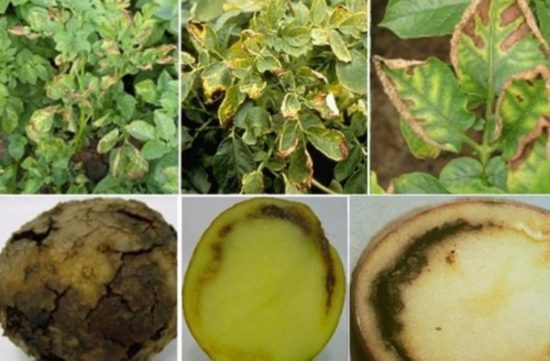
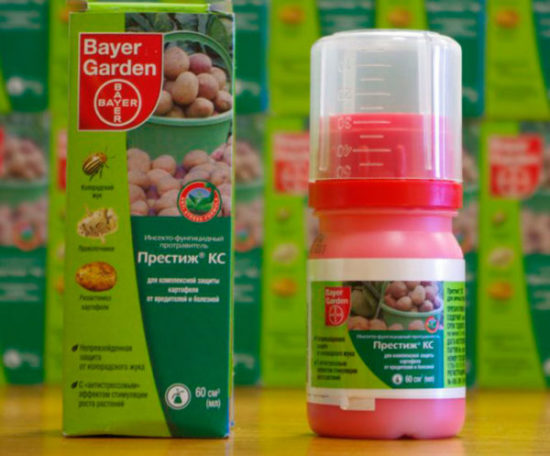
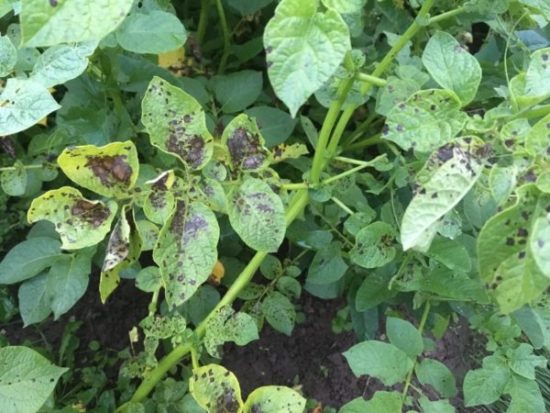
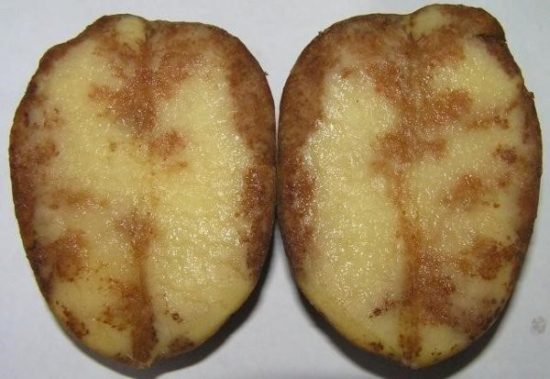
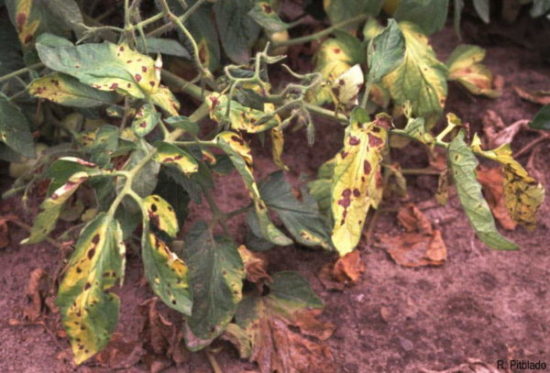
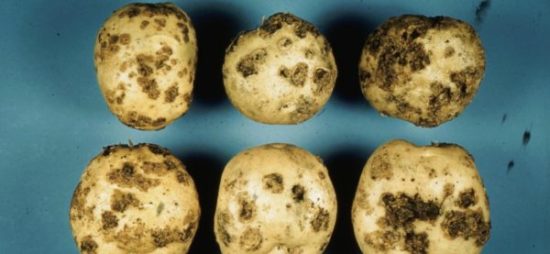
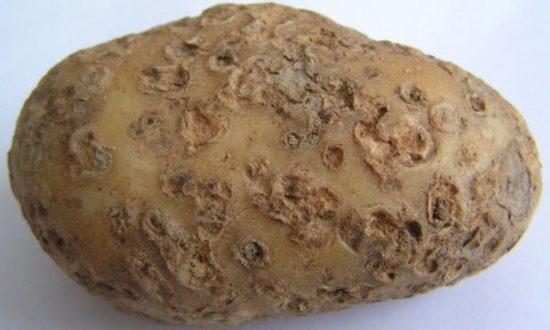
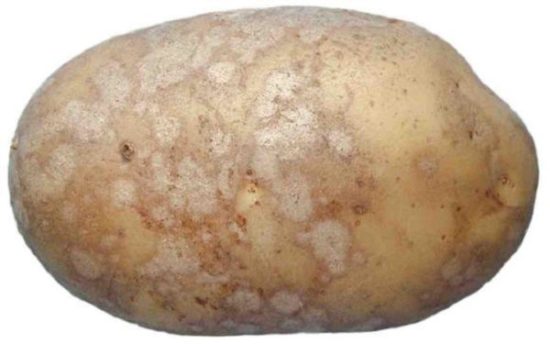
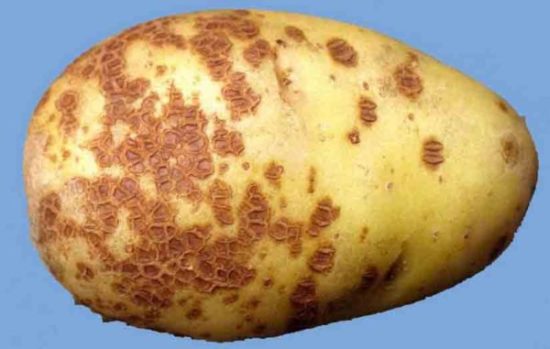
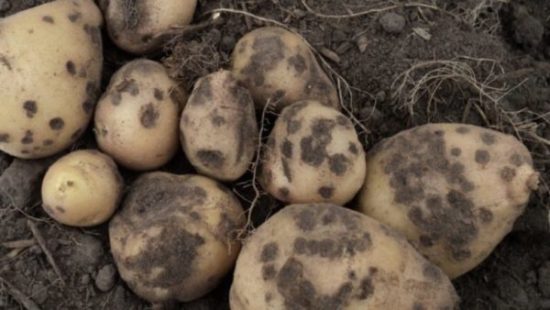
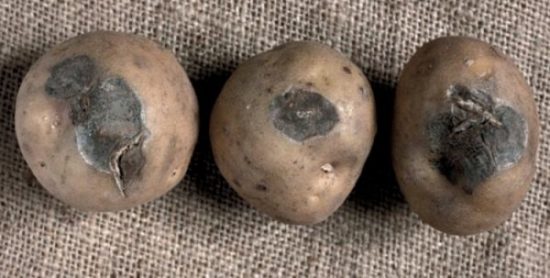
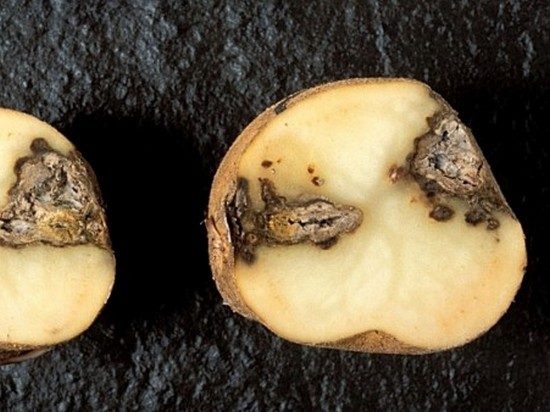
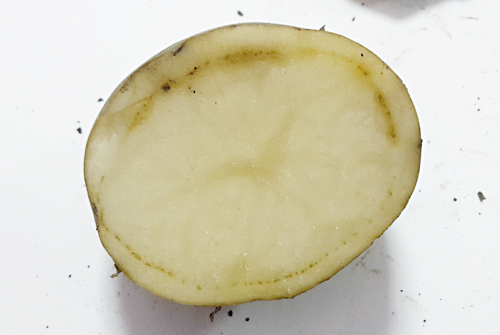
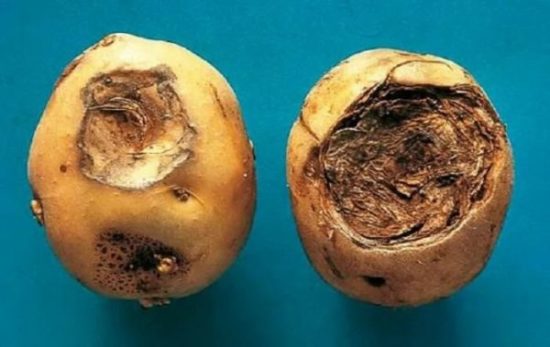
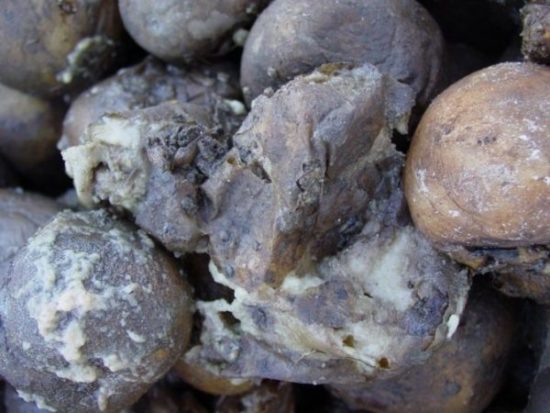
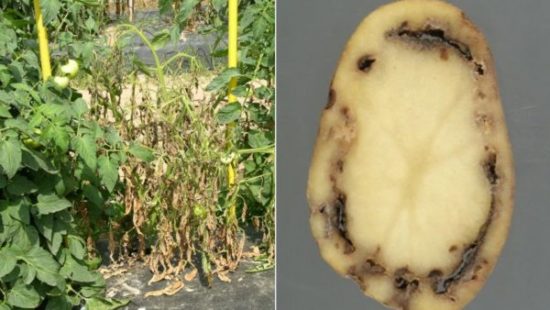
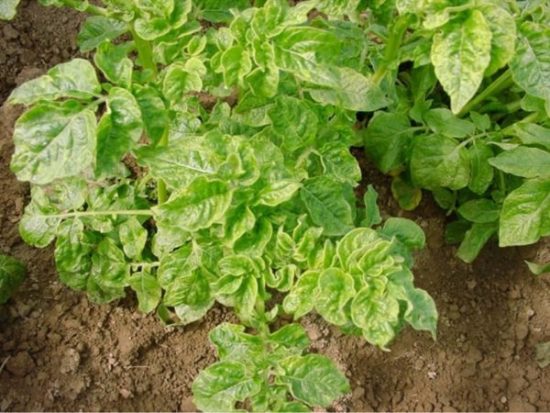
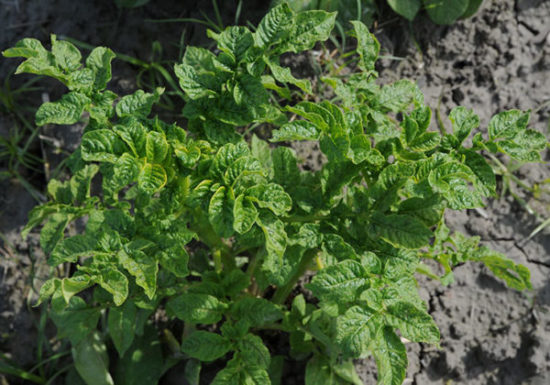
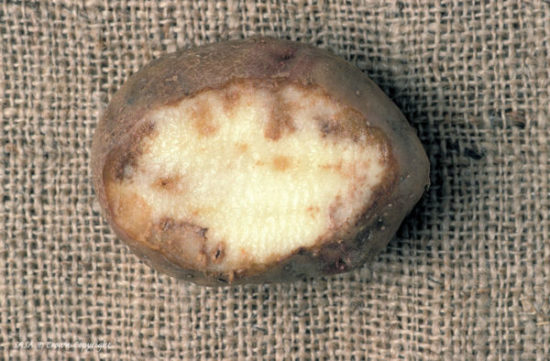

 CUCUMBERS NEVER GET SICK, I'VE BEEN USING ONLY THIS FOR 40 YEARS! I SHARE A SECRET WITH YOU, CUCUMBERS ARE LIKE THE PICTURE!
CUCUMBERS NEVER GET SICK, I'VE BEEN USING ONLY THIS FOR 40 YEARS! I SHARE A SECRET WITH YOU, CUCUMBERS ARE LIKE THE PICTURE! You can dig a bucket of potatoes from each bush. Do you think these are fairy tales? Watch the video
You can dig a bucket of potatoes from each bush. Do you think these are fairy tales? Watch the video
 How our fellow gardeners work in Korea. There is a lot to learn and just fun to watch.
How our fellow gardeners work in Korea. There is a lot to learn and just fun to watch. Eye trainer. The author claims that with daily viewing, vision is restored. They don't charge money for views.
Eye trainer. The author claims that with daily viewing, vision is restored. They don't charge money for views. A 3-ingredient cake recipe in 30 minutes is better than Napoleon. Simple and very tasty.
A 3-ingredient cake recipe in 30 minutes is better than Napoleon. Simple and very tasty. Therapeutic exercises for cervical osteochondrosis. A complete set of exercises.
Therapeutic exercises for cervical osteochondrosis. A complete set of exercises. Which indoor plants match your zodiac sign?
Which indoor plants match your zodiac sign? What about them? Excursion to German dachas.
What about them? Excursion to German dachas.